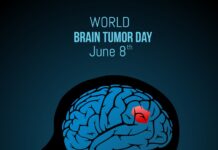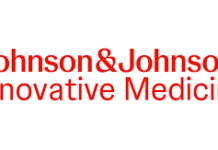With this, The Indian Practitioner is starting a new feature on the life and times of doctors, meant for lighter reading, to inspire, inform and enlighten (or even entertain) our readership of doctors. These pieces, written as first person accounts, will be based on major happenings in a doctor’s career, any life changing episodic anecdote from medical school to medical practice, peer interactions to patient interactions and experiences, episodes that are eye opening, fulfilling or even very frustrating and disappointing or a patient outcome and experience that evoked profound feelings or an absolutely unique achievement or an enterpreneurial venture, or even any incident outside of one’s practice, but important for readers to know.
With this we start off the first one on how Dr Jayesh Sheth strode into the field of genetics in the natal field.
How I got into research on genetics dates back to my experience in the year 1978 when I was pursuing my Masters through research in biochemistry at Sir Hurkisondas Hospital in Mumbai. In those days genetics was limited to identification of chromosome and most of the genetic disorders remained undiagnosed due to limited technological advances. I was always curious about developments and functions in the human body, clinical phenotype presentation and early prevention. So, during my Master’s study, under the guidance of Dr. Kumud Patil, I started working on the understanding of foetal well being during pregnancy and for diagnosis of any foetal anomalies at an early stage for its prevention. I started working on the amniotic fluid composition and how that helps the foetus to grow utero. One day the Superintendent of the Hospital, Dr. H I Jhala, called me to his office and gave me an issue of the Lancet to read on the Early Detection of Neural Tube Defect by a Biochemical Marker of Alpha Feto Protein (AFP), published by Prof D J H Brock of Edinburgh University, UK. Dr. Brock had shown the increased level of amniotic fluid and maternal serum AFP detected through Rocket Electrophoresis in mother with a child affected with neural tube defects. Dr. Jhala asked me to do this work for my Masters in addition to Lecithin /Sphingomyelin ratio for foetal lung maturity.
Challenges in Entering a New Field
As this field was very new, chemicals required for the study and the technology were not known. So I wrote a letter to Dr. Brock requesting for the detailed technique of Rocket Immuno Electrophoresis and as per the details he provided ordered the required reagents for the standardization that took almost six months. This made me enter into the totally new field of prenatal diagnosis. I could diagnose the first case of open Omphalocele which resulted in my first research paper authored by Patil K, Sheth JJ, Shah G (1980), ‘Raised maternal serum and amniotic fluid AFP associated with Omphalocele in the foetus’, Ind J Pathol Microbiol 23:97. In those days there was no computer, no telephone connectivity; so I had to depend only on personal letters, but the outcomes were remarkable.
Further, during my study when I worked on Lecithin-sphingomyelin ratio in detecting foetal lung maturity, it generated a great interest among perinatologists and my work was selected for platform presentation at the Perinatology conference scheduled in Jammu in 1979. This was my first experience in the field of medicine and my first trip outside the city. Here again I had no money, so Dr. Jhala readily approved rail travel expense for the conference.
Satisfying Achievements
Both incidents were like a genomic programming within myself to develop my career as a geneticist-biochemist and endocrinologist. This made me to pioneer Endocrine and Genetic services in Gujarat and I established the first private Charitable NGO as Foundation For Research In Genetics and Endocrinology (FRIGE) which is now well known in the country as a pioneer for the study of Lysosomal Storage Disorders in India (www.geneticcentre.org).
You always feel satisfied when your research work transforms the lives of common people. As the era on Human Genome project began, my dermatologist friend, Dr. Timir Mehta brought a large family of 30 people from my home town, Modasa who were without hair, congenitally and had increased keratogenesis on soles and palms. Our friend Dr. Radhakrishna was working in Geneva on new gene discovery. He and his boss Prof Stylianos Antonarkis readily agreed to study this in identifying the gene responsible for what is known as the Clounston Syndrome (hypohydrotic ectodermal dysplasia). This was the first report of the syndrome identifying the location of the gene on Chromosome 13q region and was published in the American Journal of Medical Genetics in 1997. This marked our entry into the field of genetics.
This was followed with many new discoveries at FRIGE like identification of B12 deficiency in Neural Tube Defects (NTD) which were contrary to the western world reporting Folate as a cause of NTDs and the samehas been confirmed in India’s largest multicentric study on role of Genes and Nutraceuticals in NTDs. Today it has become a routine obstetric practice to prescribe folate and B12 in an expected mother to prevent NTDs in the child. (Jayesh Sheth, et al. Recurrent neural tube defects and Deficiency of vitamin B12 beyond folic acid, The Journal of Obstetrics and Gynaecology of India Nov/Dec 2003:53, and Godbole K et al, Maternal one-carbon metabolism, MTHFR and TCN2 genotypes and neural tube defects in India, Birth Defects Res A Clin Mol Teratol. 2011;91(9):848-56).
In those days, specifically 25 years ago, I was more intrigued to find out the reason why small children were dying without any known diagnosis before reaching their 2nd to 5th year of life. One of my mentors in 1981, Dr. Lalit Ambani gave me a clue to work in Lysosomal Storage Disorders (ISD). This resulted in the first ever systemic publication in Indian Pediatrics demonstrating the occurrence of LSDs in India followed by large series in JIMD Reports (Sheth et al 2004 and 2014). By this time, realizing the magnitude of the problem and available treatment of some of the LSDs, ICMR had formed the National Task Force in 2015-2018. We were the first scientific group to report Gaucher as the most common storage disorder in India with 60% having a common mutation L444P in GBA gene (Sheth etal, BMC Medical Genetics, 2019). Many founder mutations for rare diseases like Tay Sachs, Morquio-A have been identified by us, contributing to almost 70% of the LSD-related research in the country today.
God has been kind throughout my journey from a small town of Modasa to Mumbai-Geneva-USA and back to Ahmedabad contributing towards the understanding of the National Rare Disease burden, its prevention, affordable diagnosis and now onto the path of treatment.























